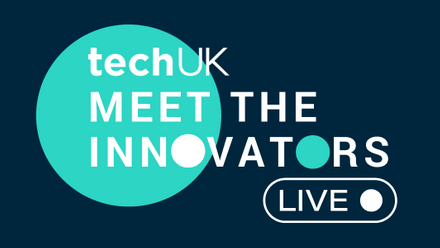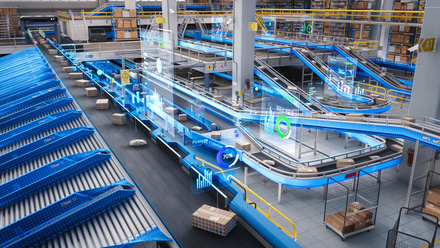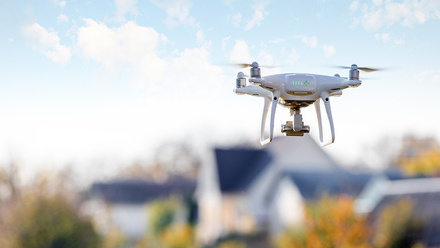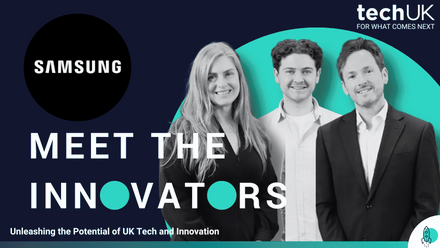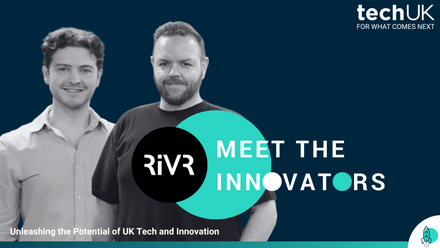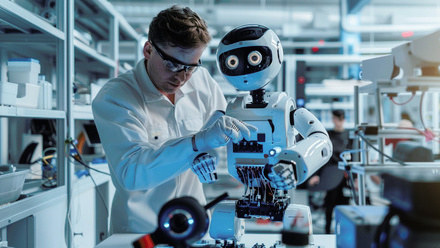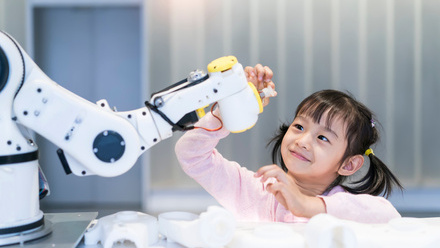Boosting UK robotics adoption: Three key sectors for safe innovation and economic growth
In the rapidly evolving landscape of global technology, the UK stands at a critical crossroads. The robotics revolution is not a distant possibility but a present reality that is reshaping economies worldwide. Despite our world-class research capabilities, the UK currently ranks just 24th globally in robotics adoption, with far fewer robots in our factories than competitor nations. This represents both a challenge and an enormous opportunity.
The global robotics market is projected to reach $218 billion by 2030. Countries that position themselves as producers and active adopters of robotics technology – not just consumers – will reap substantial economic rewards. With strategic investment and a targeted sector approach, the UK can transform its position from technology consumer to leader, but we must act decisively.
The adoption challenge
The UK's robotics paradox is striking. While we excel in academic research and innovation, we struggle with implementation. Currently, approximately 20,000 of the UK's 27,000 manufacturing SMEs operate without robots – a massive untapped opportunity for productivity improvement.
If UK automation levels matched the world's most automated countries, productivity could increase by 22%. Yet despite these potential gains, adoption rates remain stubbornly low, with the UK seeing just 3% growth in robotics adoption compared to 13% in France and 8% in Italy. The barriers extend beyond cost concerns. Many businesses struggle with uncertainty and the practical challenges of integrating robotics into their processes. This isn't simply about purchasing equipment – it requires strategic planning, workforce training, and operational adjustments.
Three key sectors for safe robotics adoption
Rather than pursuing a scattered approach to robotics adoption, the UK should focus on strategic sectors where we have existing strengths and clear economic opportunities, including:
1. Manufacturing
The manufacturing sector presents the most immediate opportunity for impact. Over the next decade, robotics and automation technologies could contribute £184 billion to the UK economy, transforming our nation's manufacturing capabilities while addressing the 58,000 vacancies currently facing the sector.
The benefits extend beyond productivity. Robotic systems allow for the automation of repetitive and dangerous tasks, improving workplace safety while enabling employees to focus on higher-value, more rewarding work. They provide consistent precision, reducing waste and improving product reliability, while allowing for more flexible production.
For safe and responsible adoption, manufacturing businesses can begin with collaborative robots (cobots) that work alongside human employees. For example, Castle MacLellan Foods, a premium pâté producer based in Scotland, recently implemented this approach successfully, introducing cobots to handle repetitive packaging tasks while allowing skilled employees to focus on artisanal aspects of production where human expertise adds value.
2. Healthcare and social care
With an ageing population increasing demand and persistent workforce shortages, the UK's healthcare system faces unprecedented pressures. The global healthcare robotics market is projected to grow from $1.75 billion in 2023 to $3.42 billion by 2028, representing both a significant export opportunity and a chance to transform patient care.
Even modest efficiency improvements through robotics could generate substantial savings within the NHS. A conservative 0.1% efficiency improvement would yield millions annually for reinvestment, while more ambitious adoption could save hundreds of millions while improving patient outcomes.
At the National Robotarium, we're demonstrating how this can work in practice. The SPRING project has developed conversational robots that support hospital care, engaging with patients to reduce anxiety while decreasing infection risk and freeing up clinical staff time. Meanwhile, Touchlab has created electronic skin technology that allows clinicians to 'feel' patients remotely, significantly reducing infection risks in hospitals.
Safe adoption in healthcare means focusing on technologies that augment rather than replace human care, ensuring that ethical considerations and patient experience remain central to implementation decisions.
3. Offshore and Renewables
With the UK Government targeting a three-fold increase of offshore wind power to 50GW by 2030, there is an urgent need for technologies that improve efficiency and safety while reducing costs. The market for Robotics and Autonomous Systems in offshore wind operation and maintenance is projected to reach £341 million annually by 2030.
The UNITE project at the National Robotarium, in partnership with Fugro, is developing autonomous systems for offshore wind turbine maintenance. These technologies can reduce maintenance costs by up to 40% through predictive approaches, minimise human exposure to hazardous environments, and cut maintenance mission fuel consumption by up to 97%.
For safe adoption in this sector, implementing comprehensive testing protocols and establishing clear liability frameworks are essential steps that allow innovation to proceed while managing risks effectively.
Bridging the implementation gap
To accelerate safe robotics adoption across these key sectors, the UK needs a coordinated approach that addresses the readiness gap many businesses face. At the National Robotarium, we're tackling this through our Robotics Readiness Workshops, providing organisations with unbiased, expert-led assessments of their preparedness for robotic integration.
These sessions help businesses evaluate their current position, understand available technologies, and develop practical roadmaps for responsible adoption that align with specific needs and capabilities. This focus on readiness is crucial for ensuring that robotics adoption creates value rather than disruption.
Building on this approach, the UK should establish a national framework for robotics adoption that includes sector-specific guidance on safe implementation practices, clear regulatory pathways that enable innovation while protecting public interests, financial incentives that help businesses manage transition costs, and skills development programs that prepare the workforce for changing job requirements.
The path forward
The National Robotarium offers a proven model for how the UK can bridge its implementation gap. Established through the Edinburgh and South-East Scotland City Region Deal with capital funding of £22.4 million, this world-leading centre has already delivered remarkable results in just two years, supporting the creation of over 100 direct and indirect jobs and housing 14 startup and spinout robotics companies.
This success demonstrates how targeted investment in robotics infrastructure can deliver immediate economic and social benefits. By replicating this approach across key sectors and regions, the UK can build a coordinated ecosystem for robotics innovation and adoption.
The UK has every advantage needed to lead in the robotics revolution – world-class research capabilities, engineering excellence, and entrepreneurial spirit. With a focused strategy that prioritises key sectors and addresses implementation barriers, we can transform our position in global robotics, creating thousands of high-quality jobs and establishing leadership in technologies that will define the future economy.
The window of opportunity won't stay open forever. The time for action is now.
techUK – Unleashing UK Tech and Innovation
The UK is home to emerging technologies that have the power to revolutionise entire industries. From quantum to semiconductors; from gaming to the New Space Economy, they all have the unique opportunity to help prepare for what comes next.
techUK members lead the development of these technologies. Together we are working with Government and other stakeholders to address tech innovation priorities and build an innovation ecosystem that will benefit people, society, economy and the planet - and unleash the UK as a global leader in tech and innovation.
For more information, or to get in touch, please visit our Innovation Hub and click ‘contact us’.
Latest news and insights
Other forms of content
Sprint Campaigns
techUK's sprint campaigns explore how emerging and transformative technologies are developed, applied and commercialised across the UK's innovation ecosystem.
Activity includes workshops, roundtables, panel discussions, networking sessions, Summits, and flagship reports (setting out recommendations for Government and industry).
Each campaign runs for 4-6 months and features regular collaborations with programmes across techUK.
techUK's latest sprint campaign is on Robotics & Automation technologies. Find out how to get involved by clicking here.
Running from September to December 2023, this sprint campaign explored how the UK can lead on the development, application and commercialisation of space technologies, bring more non-space companies into the sector, and ultimately realise the benefits of the New Space Economy.
These technologies include AI, quantum, lasers, robotics & automation, advanced propulsion and materials, and semiconductors.
Activity has taken the form of roundtables, panel discussions, networking sessions, Summits, thought leadership pieces, policy recommendations, and a report. The report, containing member case studies and policy recommendations, was launched in March 2024 at Satellite Applications Catapult's Harwell campus.
Get in touch below to find out more about techUK's ongoing work in this area.
Event round-ups
Report
Insights
Get in touch
Running from January to May 2024, this sprint campaign explored how the UK can lead on the development, application and commercialisation of the technologies set to underpin the Gaming & Esports sector of the future.
These include AI, augmented / virtual / mixed / extended reality, haptics, cloud & edge computing, semiconductors, and advanced connectivity (5/6G).
Activity took the form of roundtables, panel discussions, networking sessions, Summits, and thought leadership pieces. A report featuring member case studies and policy recommendations was launched at The National Videogame Museum in November 2024.
Get in touch below to find out more about techUK's future plans in this space.
Report
Event round-ups
Insights
Get in touch
Running from July to December 2024, this sprint campaign explored how the UK can lead on the development, application and commercialisation of web3 and immersive technologies.
These include blockchain, smart contracts, digital assets, augmented / virtual / mixed / extended reality, spatial computing, haptics and holograms.
Activity took the form of roundtables, workshops, panel discussions, networking sessions, tech demos, Summits, thought leadership pieces, policy recommendations, and a report (to be launched in 2025).
Get in touch below to find out more about techUK's future plans in this space.
Event round-ups
Insights
Get in touch
Running from February to June 2025, this sprint campaign is exploring how the UK can lead on the development, application and commercialisation of robotic & automation technologies.
These include autonomous vehicles, drones, humanoids, and applications across industry & manufacturing, defence, transport & mobility, logistics, and more.
Activity is taking the form of roundtables, workshops, panel discussions, networking sessions, tech demos, Summits, thought leadership pieces, policy recommendations, and a report (to be launched in Q4 2025).
Get in touch below to get involved or find out more about techUK's future plans in this space.
Upcoming events
Insights
Event round-ups
Get in touch
Campaign Weeks
Our annual Campaign Weeks enable techUK members to explore how the UK can lead on the development and application of emerging and transformative technologies.
Members do this by contributing blogs or vlogs, speaking at events, and highlighting examples of best practice within the UK's tech sector.
Summits
Tech and Innovation Summit 2025
Tech and Innovation Summit 2023
Tech and Innovation Summit 2024
Receive our Tech and Innovation insights
Sign-up to get the latest updates and opportunities across Technology and Innovation.









